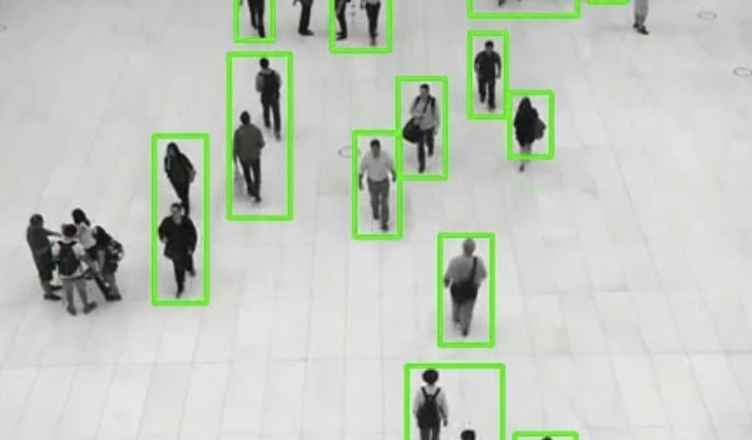Introduction:
Welcome to an exciting journey into computer vision and Python programming! In this comprehensive guide, we’ll explore how to create a person counter using OpenCV, a powerful library for computer vision tasks. Whether you’re a beginner or an aspiring Python pro, this tutorial will help you understand the magic behind computer vision and real-world applications.
Table of Contents:
1. Understanding the Basics
- Introduction to Computer Vision: A brief overview of what computer vision is and how it’s used in real-world applications.
- Project Overview: An explanation of the goal and scope of our person counter project.
2. Setting Up Your Environment
- Python and OpenCV Installation: Step-by-step instructions on installing Python and OpenCV on your system.
- Library Dependencies: Overview of the Python libraries required for this project and how to install them.
3. Collecting and Preparing Data
- Data Sources: Discussing various sources of video data, including pre-recorded videos and live camera feeds.
- Data Preprocessing: Techniques for cleaning and enhancing video data for better object detection.
4. Object Detection with OpenCV
- Haar Cascades: An introduction to Haar Cascades and how they are used for object detection.
- Training a Classifier (Optional): If you wish to train a custom classifier, we’ll cover the basics.
5. Implementing Person Detection
- Code Walkthrough: Detailed code examples to detect persons in video streams using OpenCV.
- Fine-tuning Parameters: Tips on adjusting detection parameters for accuracy.
6. Object Tracking for Counting
- Introduction to Object Tracking: An explanation of object tracking and its role in counting.
- OpenCV Tracking Algorithms: Overview of tracking algorithms available in OpenCV.
7. Building the Person Counter
- Integration of Detection and Tracking: How to combine object detection and tracking for counting.
- Creating Counters: Designing counters to keep track of people entering and exiting a region of interest.
Complete Code
Creating a complete Python program for a person counter using OpenCV in Python 3 is a substantial task that involves multiple steps and a fair amount of code. To keep this response manageable, I’ll provide a simplified outline of the code structure along with some key code snippets for critical sections. You can use this as a starting point and build upon it for your project.
Please note that this code is a basic example. For a robust and production-ready implementation, you may need to handle various edge cases, optimize performance, and integrate additional features.
import cv2
# Initialize person counter
person_count = 0
# Load pre-trained person detection classifier (Haar Cascade)
classifier = cv2.CascadeClassifier("haarcascade_fullbody.xml")
# Initialize video capture from a camera or video file
cap = cv2.VideoCapture(0) # You can replace 0 with the video file path
while True:
# Read a frame from the video source
ret, frame = cap.read()
if not ret:
break
# Convert the frame to grayscale for detection
gray = cv2.cvtColor(frame, cv2.COLOR_BGR2GRAY)
# Detect persons in the frame
persons = classifier.detectMultiScale(gray, scaleFactor=1.1, minNeighbors=5, minSize=(30, 30))
# Draw rectangles around detected persons
for (x, y, w, h) in persons:
cv2.rectangle(frame, (x, y), (x + w, y + h), (0, 255, 0), 2)
# Update the person count
person_count = len(persons)
# Display the current person count
cv2.putText(frame, f"Persons: {person_count}", (10, 30), cv2.FONT_HERSHEY_SIMPLEX, 1, (0, 0, 255), 2)
# Display the frame
cv2.imshow("Person Counter", frame)
# Exit the loop if 'q' key is pressed
if cv2.waitKey(1) & 0xFF == ord('q'):
break
# Release video capture and close OpenCV windows
cap.release()
cv2.destroyAllWindows()
This code provides a basic framework for detecting and counting persons in a video stream using OpenCV’s Haar Cascade classifier. Here’s a high-level overview of the code:
- Load a pre-trained Haar Cascade classifier for full-body detection.
- Initialize video capture from either a camera (replace
0with the camera index) or a video file. - In the main loop:
- Read frames from the video source.
- Convert frames to grayscale for detection.
- Detect persons in the frame using the classifier.
- Draw rectangles around detected persons.
- Update the person count based on the number of detected persons.
- Display the person count on the frame.
- Display the frame.
- The loop continues until the ‘q’ key is pressed.
- Release the video capture and close OpenCV windows upon exiting the loop.
Remember to replace "haarcascade_fullbody.xml" with the path to the full-body Haar Cascade classifier XML file, which you can obtain from OpenCV’s official GitHub repository or other sources.
This code provides a foundation for your person counter project. Depending on your specific requirements, you can further enhance it by adding features such as persistence of count, time-based statistics, and real-time data visualization.
Conclusion:
Congratulations! You’ve now mastered the art of building a person counter using OpenCV and Python. This hands-on experience not only enhances your Python skills but also opens the door to a world of possibilities in computer vision.
As you embark on your journey to becoming a Python pro, remember that the sky’s the limit when it comes to the innovative applications you can create with your newfound knowledge. Whether it’s for smart retail, security, or beyond, your skills are now equipped to make a real impact.
So, keep coding, keep innovating, and keep pushing the boundaries of what’s possible with Python and computer vision.
Also, check out our other playlist Rasa Chatbot, Internet of things, Docker, Python Programming, MQTT, Tech News, ESP-IDF etc.
Become a member of our social family on youtube here.
Stay tuned and Happy Learning. ✌🏻😃
Happy coding! ❤️🔥






